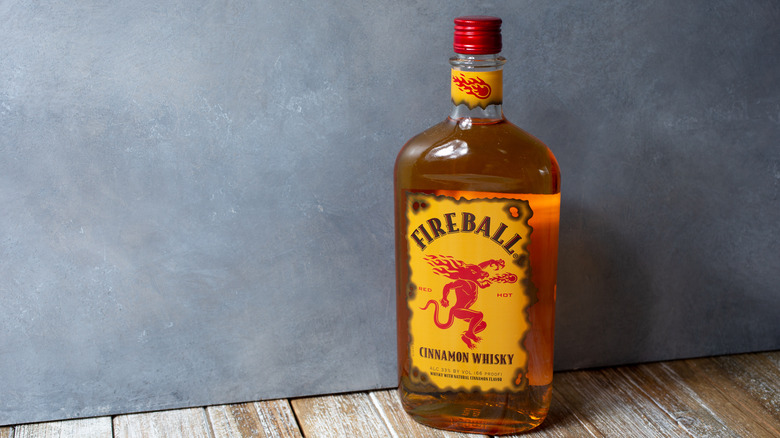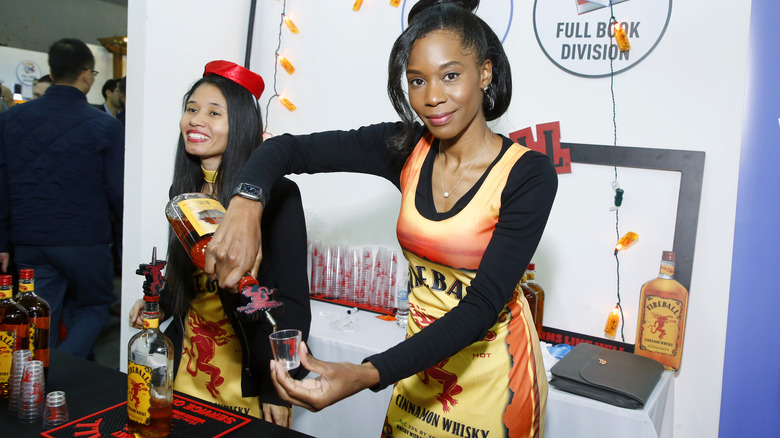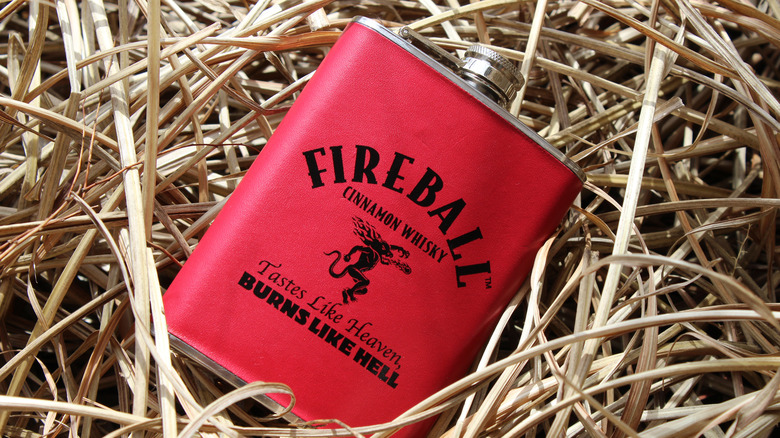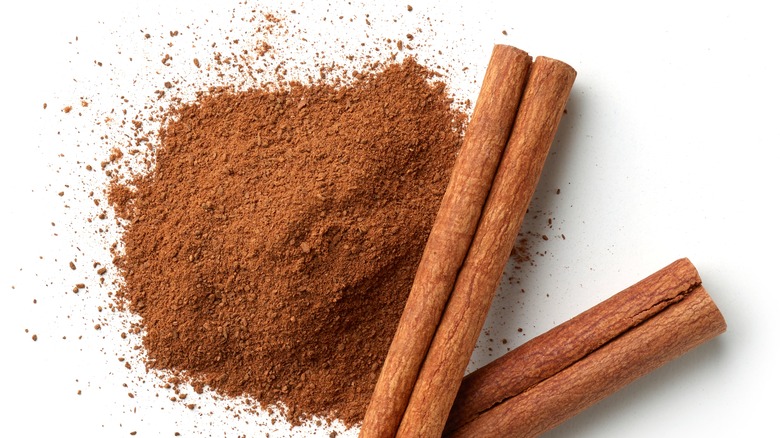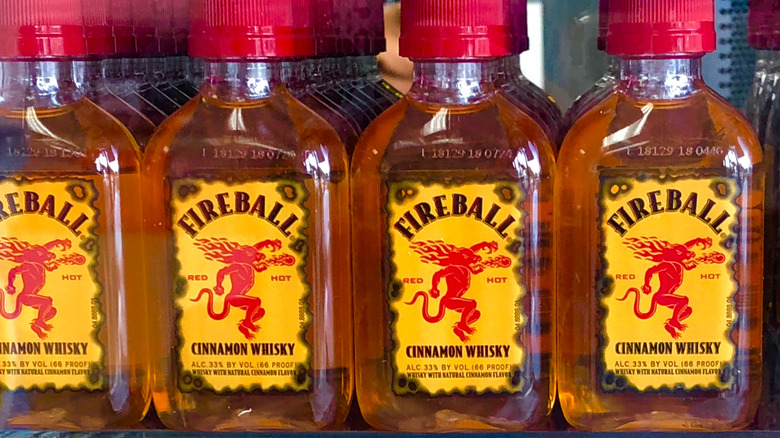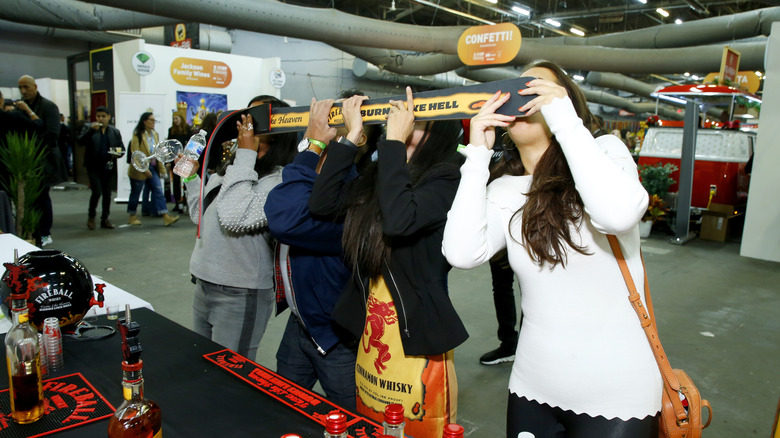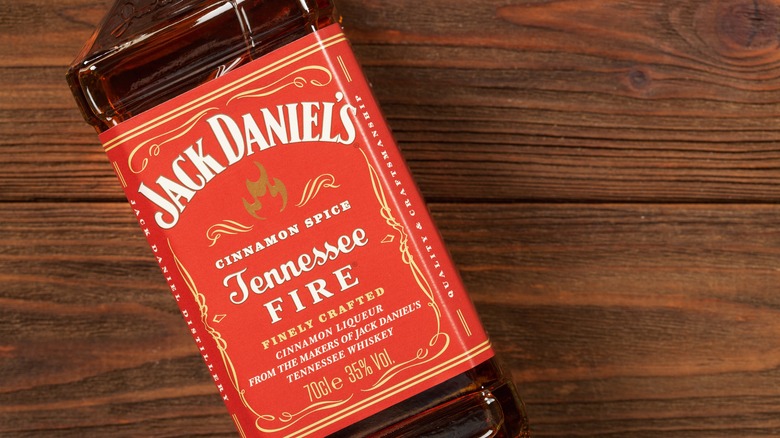Fireball Cinnamon Whisky: The Ultimate Bottle Guide
Fireball Cinnamon Whisky is more than just the stuff coating the floors of your local college dive bar. It's a cinnamon-flavored whisky with an interesting history, fun branding, and a cult of personality that makes it a more serious spirit than the dorm room shot you might know it as. The lack of an "e" in Fireball Whisky's name is a product of its Canadian heritage (the Canadians drop the "e" in whisky across the board, according to Scotch Whisky), and the name itself is something of a misnomer, as the drink's low-octane alcohol levels plants it firmly in the "liqueur" genre rather than as a true whisky.
Though the drink has a reputation as an inexpensive goes-down-easy shot, it's also a versatile player on any serious home bar cart. From spicing up cocktails to mixing it with cider, Fireball is a formidable weapon if you know how to use it. So dust off those shot glasses and throw away any preconceived notions, because our Fireball Cinnamon Whisky guide will have you lining up a shot of the hot stuff in no time.
From doctor to devil: the history of Fireball
Before becoming the bar behemoth we know it as today, Fireball had its humble beginnings in Canada, according to Whiskey Rocks. In the mid-1980s it was released as Dr. McGillicuddy's Fireball Cinnamon Whisky, a name it retained even after the company was sold from Seagram & Sons to The Sazerac Company in 1989. The Dr. McGillicuddy Fireball Cinnamon Whisky brand limped along for the next two decades, enjoying little commercial success. Stagnant sales and low word-of-mouth support did not indicate that the medicinally-themed cinnamon liqueur was fated to become famous on any level — never mind as the hard-partying brand that would take the United States by storm.
But all that changed in 2007, Bravo notes. Sazerac stripped the whisky of its Dr. McGillicuddy moniker, rebranded the logo, and sent forth Fireball evangelists to bars in Nashville and Austin to give away free shots. The low-ABV liqueur was a palatable, cheap alternative to more "serious" shots like vodka, tequila, or (real) whiskey. Soon, Sazerac's plan started to pay off: A demographic of young, budget-conscious drinkers with unsophisticated palates were swilling the stuff down, and fast.
The push continued to other towns across America, and by 2011, the brand's retail sales had grown to about $2 million annually, according to Bravo. Two years later, they were at $61 million. And that's only accounting for off-the-shelf sales — not shots poured in bars. Welcome, Fireball.
Part spicy, part sweet
If you're not a Fireball aficionado, you're probably wondering what it tastes like at this point. Well, it tastes like cinnamon, of course! Specifically, the tender burn of Canadian whisky mixed with cinnamon flavoring and a balanced sweetener that helps it go down easy. The liqueur is only 66 proof (a "normal" whiskey runs 80+) so it's slightly lighter on its feet. In short, it resembles the taste of Atomic Fireball candy or Big Red gum: It's cinnamon with a burn. Fireball's official slogan is, "Tastes like heaven, burns like hell," if that gives you an idea.
More poetically, Fireball tastes like those crisp autumn afternoons where go right from class to the bar with your friends. Or cool summer nights around the campfire when the beer runs dry and someone dusts off a bottle from on top of the fridge. Or even your pal's thirtieth birthday, when someone buys a round of the cinnamon sipper for old times' sake and everybody notes, "This is actually pretty good."
How Fireball is made
Fireball says it keeps its recipe pretty tightly under wraps, but there are a few things we know for sure. According to Caskers, its base is Canadian whisky aged in used American bourbon barrels. The brand then flavors the whisky base with natural cinnamon and other secret ingredients to soften the bite. Despite being labeled as "whisky," though, the low-ABV and cinnamon flavor mean that Fireball can't officially call itself a "Canadian whisky" — just "whisky."
Fireball's recipe's mystery has encouraged a host of at-home copycats to attempt to replicate the spicy classic with bottom-shelf whiskey, cinnamon, simple syrup, and some combination of chili peppers flakes and oil, like this recipe from All Natural & Good. If you're interested in learning how to make Fireball at home, there are plenty of resources out there for the would-be home distiller. But we recommend just shelling out for the real stuff — because, as you'll soon learn, it's not a bank-breaker the way some other bar cart additions can be.
No antifreeze here
Despite some misconceptions, Fireball does not — we repeat, does not — contain antifreeze. According to Gizmodo, the misunderstanding happened when a single ingredient called propylene glycol, generally deemed safe by the FDA for both food and beverage consumption, was found in European batches at a higher level than European authorities permit. (They shipped a completely safe U.S. batch to Europe, where the laws are slightly different.) There was no harm done to anybody — except Fireball's reputation. Because the ingredient is also found in some environmentally-friendly types of antifreeze, says The Spirits Business, Fireball got publicly burned. They weren't shy about defending their recipe, pointing out that the chemical compound is used in over 4,000 other common products including soft drinks, sweeteners, food, and, (you guessed it), other alcoholic beverages.
Fast forward to today and Fireball has altered its recipe to omit propylene glycol entirely. As stated on their website, "All versions of Fireball, both in the U.S. and the rest of the world, are 100% PG (propylene glycol) free. As part of our work on the shelf stability and given the nature of the natural ingredients we use, we updated the shelf stability part of the formula for Fireball some time ago; this updated formula does not use PG." So even if you're dubious about the chemical's "entirely safe to drink" claim, you can take shots in peace — the stuff isn't even in there anymore!
It even comes in kegs
If the classic 750ml bottle isn't enough for you, Fireball also sometimes comes in kegs. According to the website, Fireball's limited edition FireKeg holds five liters of the spicy stuff — that's 115 shots, for those of you keeping score at home. According to Maxim, the kegs were produced "in limited quantities" in fall 2021 and featured three spouts so that you and your friends never had to line up for your turn at the trough. A cursory search online shows waning availability as the stuff gets gobbled up at independent wine shops and whiskey vendors. Here's hoping the FireKeg makes perennial returns.
Fireball has also expanded its brand to include canned drinks (think: Fireball Lemonade and Fireball Apple); the Firebox, a boxed-wine lookalike two 1.75-L pouches of the cinnamon whisky; Fireball kegs; party buckets and carriers with small format bottles; and a Fireball beer pong set. It's called diversifying your portfolio, people.
Fireball helps you remove old tattoos
Fireball has a history of big, over-the-top stunts. (After all, they got famous buying college kids shots just for the publicity.) Sometimes those stunts mean hosting a desert party with 300 drones spelling out the company's name and logo in the sky. Other times, it's an anti-Valentine's Day campaign to help people cover up regrettable relationship tattoos — for real. In February 2022, Fireball partnered with tattoo artist JonBoy to help people cover up tattoos they got in honor of romantic partners they were no longer with, said Outsider.
JonBoy said to Outsider, "I've been a fan of Fireball Whisky for a long time. This (anti) Valentine's Day, I teamed up with the brand to create a custom collection that can help cover up a tattoo of your ex's name, remove a matching tat, or for those die-hard fans, show your love for Fireball in a more permanent way. Each of the three designs was inspired by some of my favorite elements of the brand." We're not sure how we feel about inking Fireball on us just yet, but we're here for the party.
How to drink it
Though Fireball got famous in shot form, that isn't the only way to enjoy it. Sure, you can slug back a quick shot of the stuff, but you can also class up any party by using Fireball as the base for whisky cocktails or as a helping hand to jazz up something seasonal, like the suggestions found at Liquor.com. Let's start with the classics, though. First, you can take it as a shot. That's right. Order up, take it down. Easy.
You can also do it on the rocks — like a shot, but classier. (Sort of. Maybe just colder.) Another shot option is the Cinnamon Toast Crunch shot, which is Fireball and RumChata mixed (via Liquor.com). Extra points if you can get your bartender to rim the glass with cinnamon sugar. For cool autumn nights, there's something called a ciderball, which may go by other names depending on who's pouring it, but basically, it's hard cider with a shot of Fireball poured in.
Some of the best drinks to mix with Fireball might be stuff you've already got lying around the house. Try it with Coke, apple cider, lemonade, ginger ale, cream soda — even pineapple juice works, according to Fireball's website.
Fireball vs. Jack Daniels Tennessee Fire
They say there's nothing original in this world. And while Fireball might stake a claim to being the original cinnamon whisky, there are plenty of would-be usurpers to its throne. Cool Material says the burgeoning popularity of spicy spirits has stuff like Wild Turkey American Honey Sting or Patrón XO Café Incendio making plays for their share of the market.
But perhaps none is so popular — or so direct a competitor — as Jack Daniel's Tennessee Fire. According to Fireball and Jack Daniels, Tennessee Fire is, for all intents and purposes, a 1-to-1 synonym for Fireball. Sure, it is bourbon-based as opposed to Canadian whisky. And yes, their ABVs have a 2% difference (JD rings in at 35% to Fireball's 33%). But both are made with real cinnamon and sport a distinctly sweet, easy-does-it flavor profile (as far as shooting whiskey goes, at least). While JD might come from a more prestigious lineage of whiskey distillers than Fireball, there can only be one OG cinnamon whisky, and it's that Canadian-bred dragon we all know and love.
